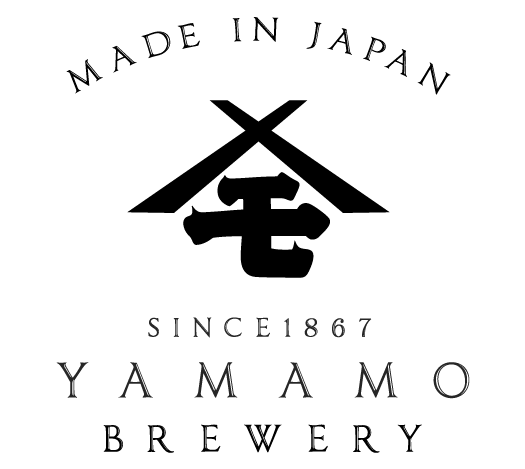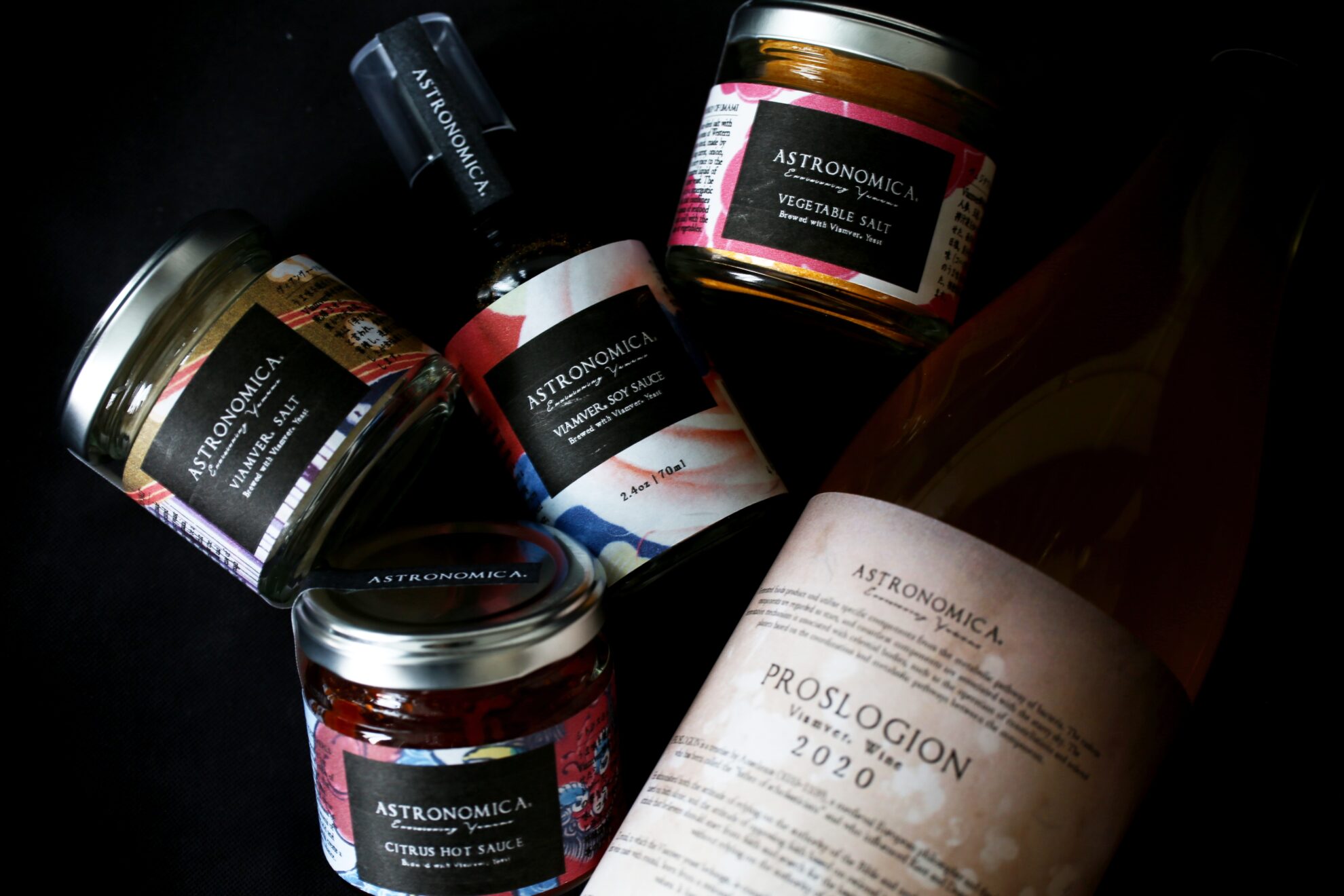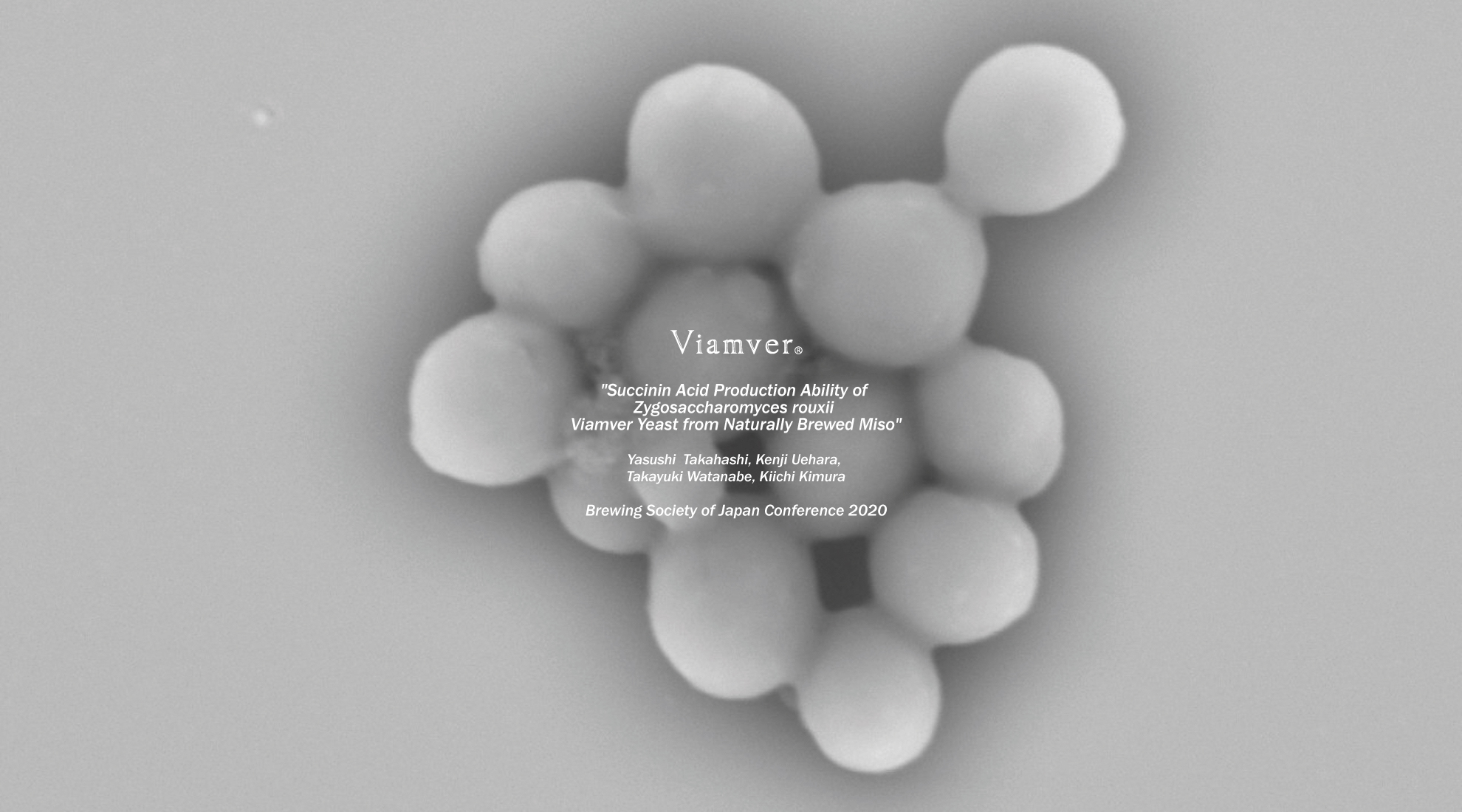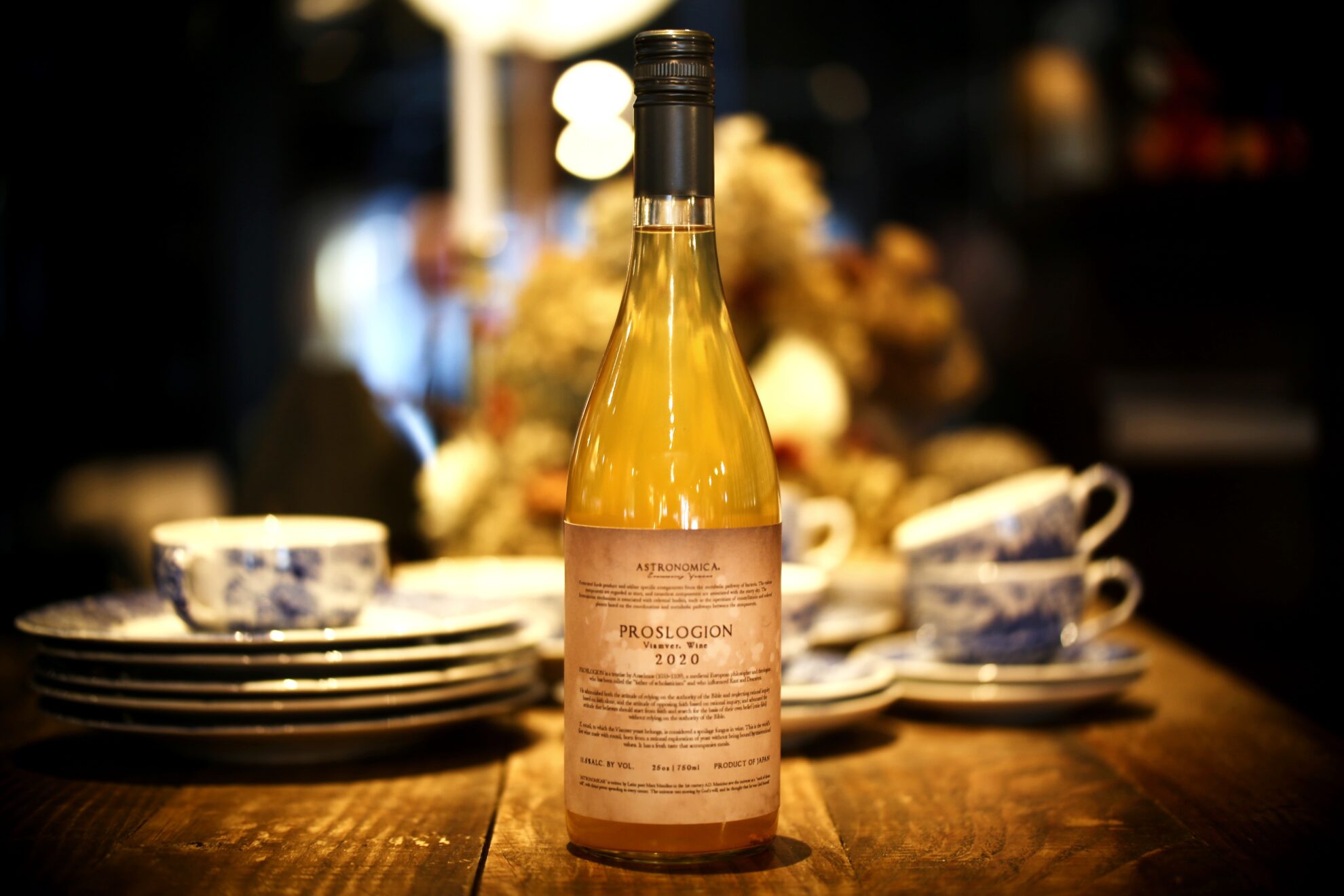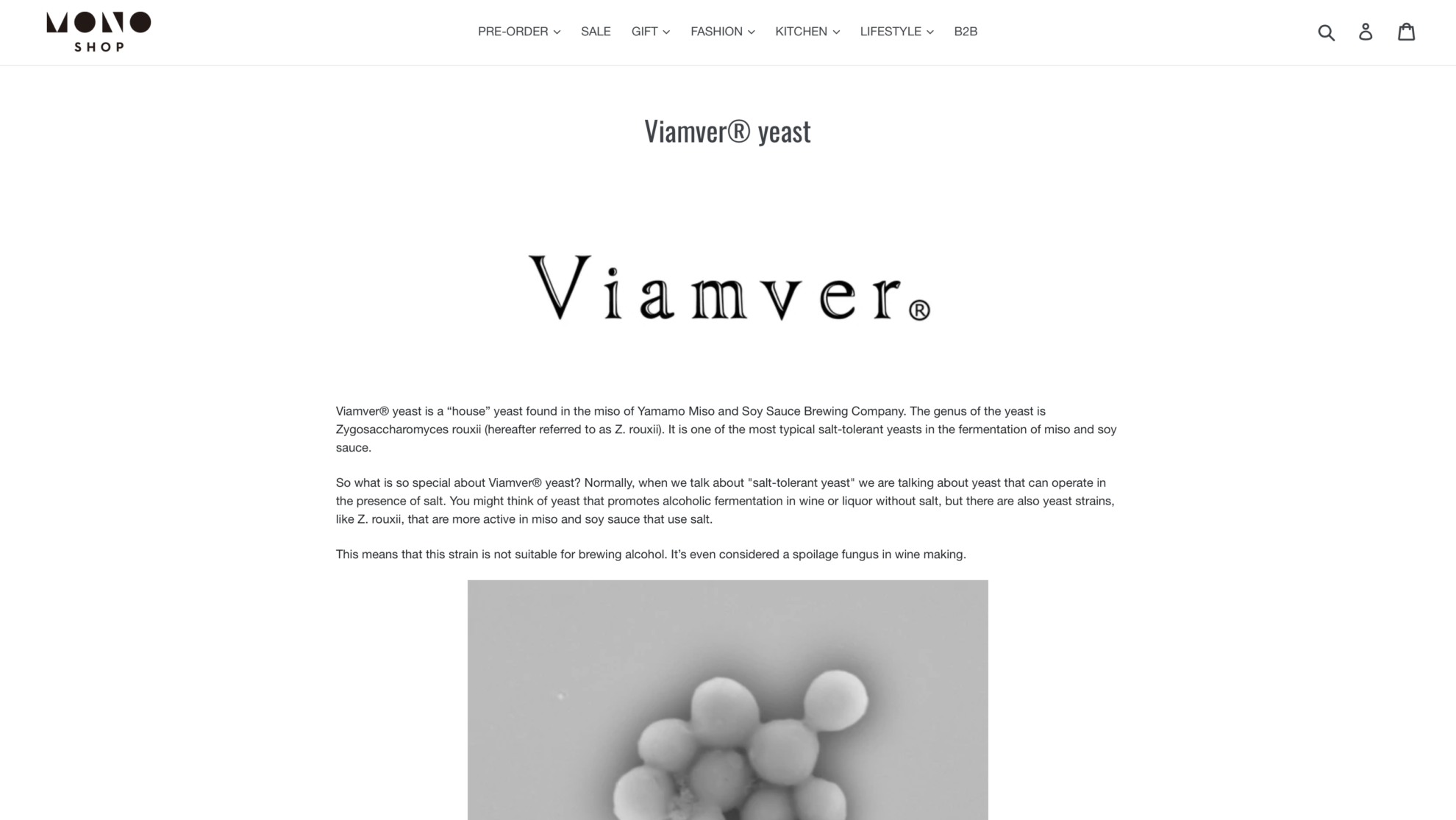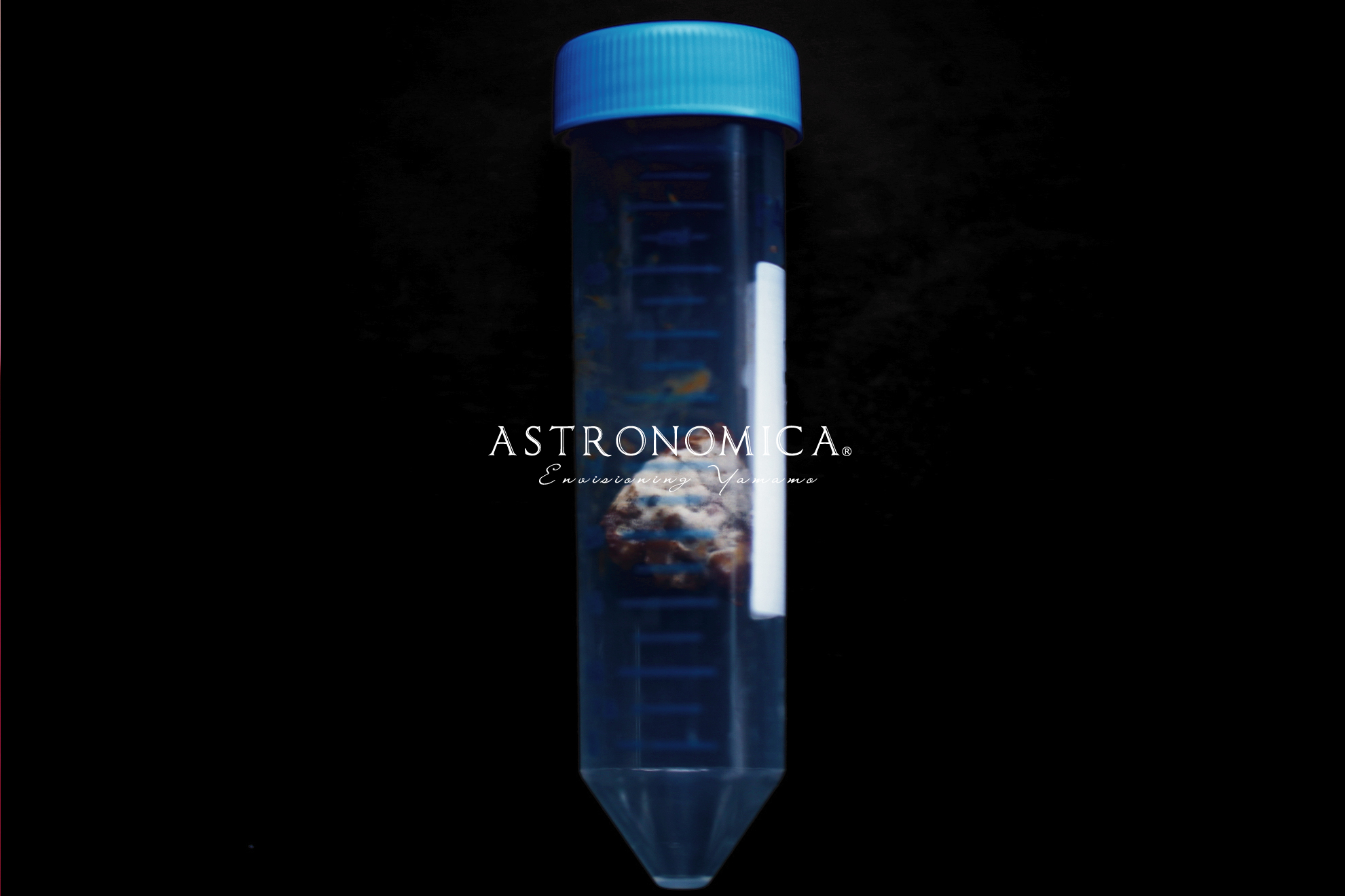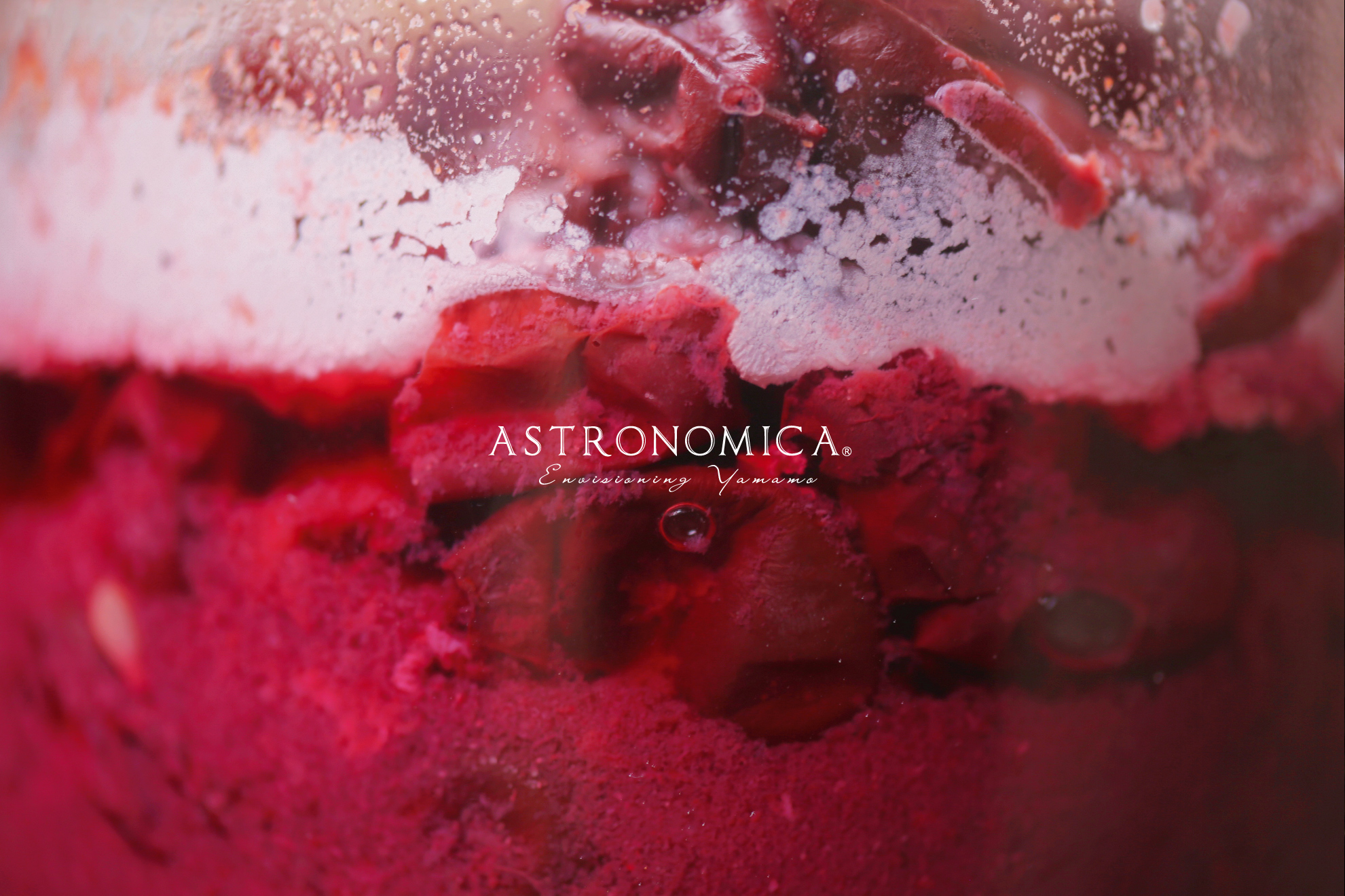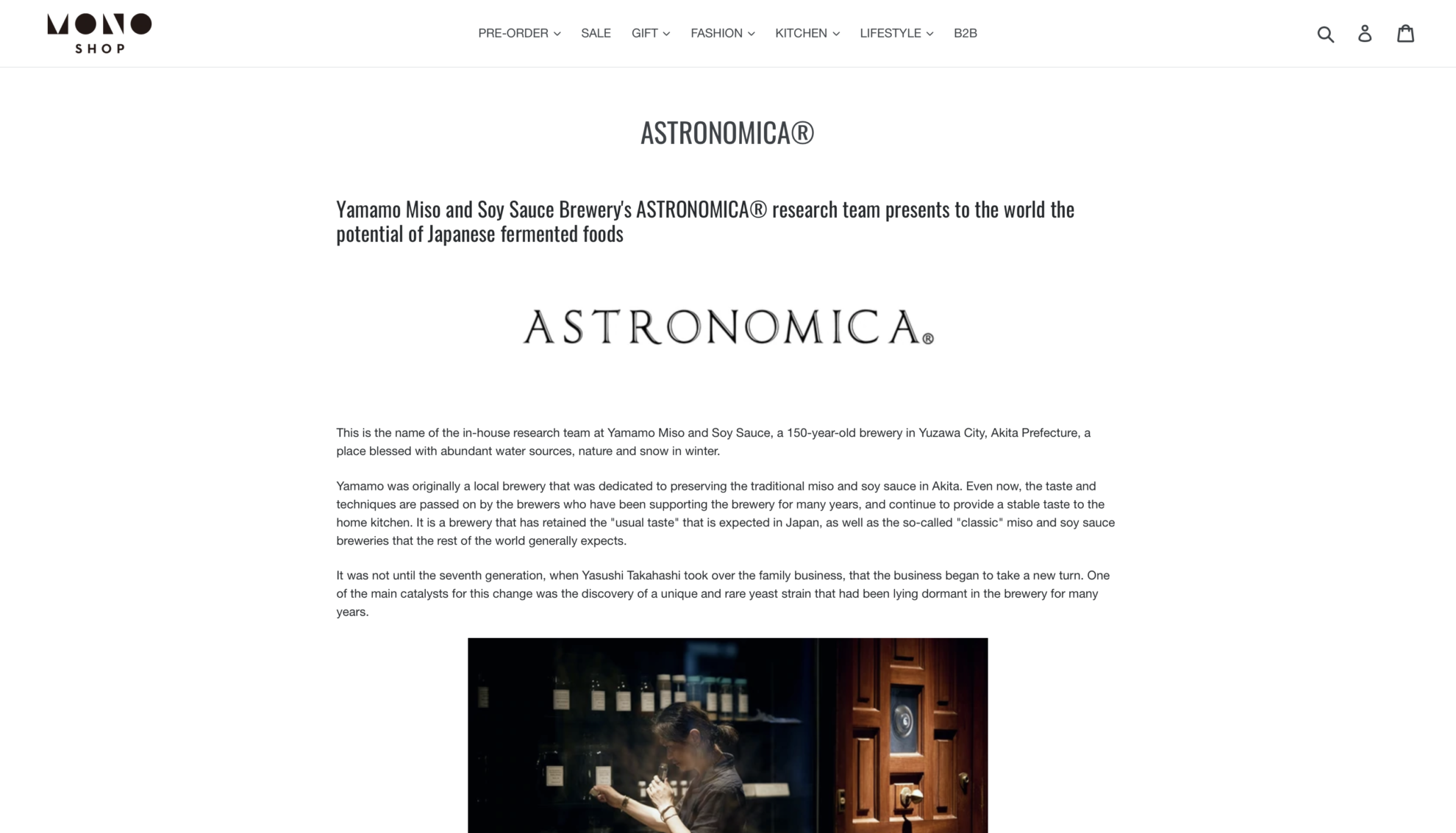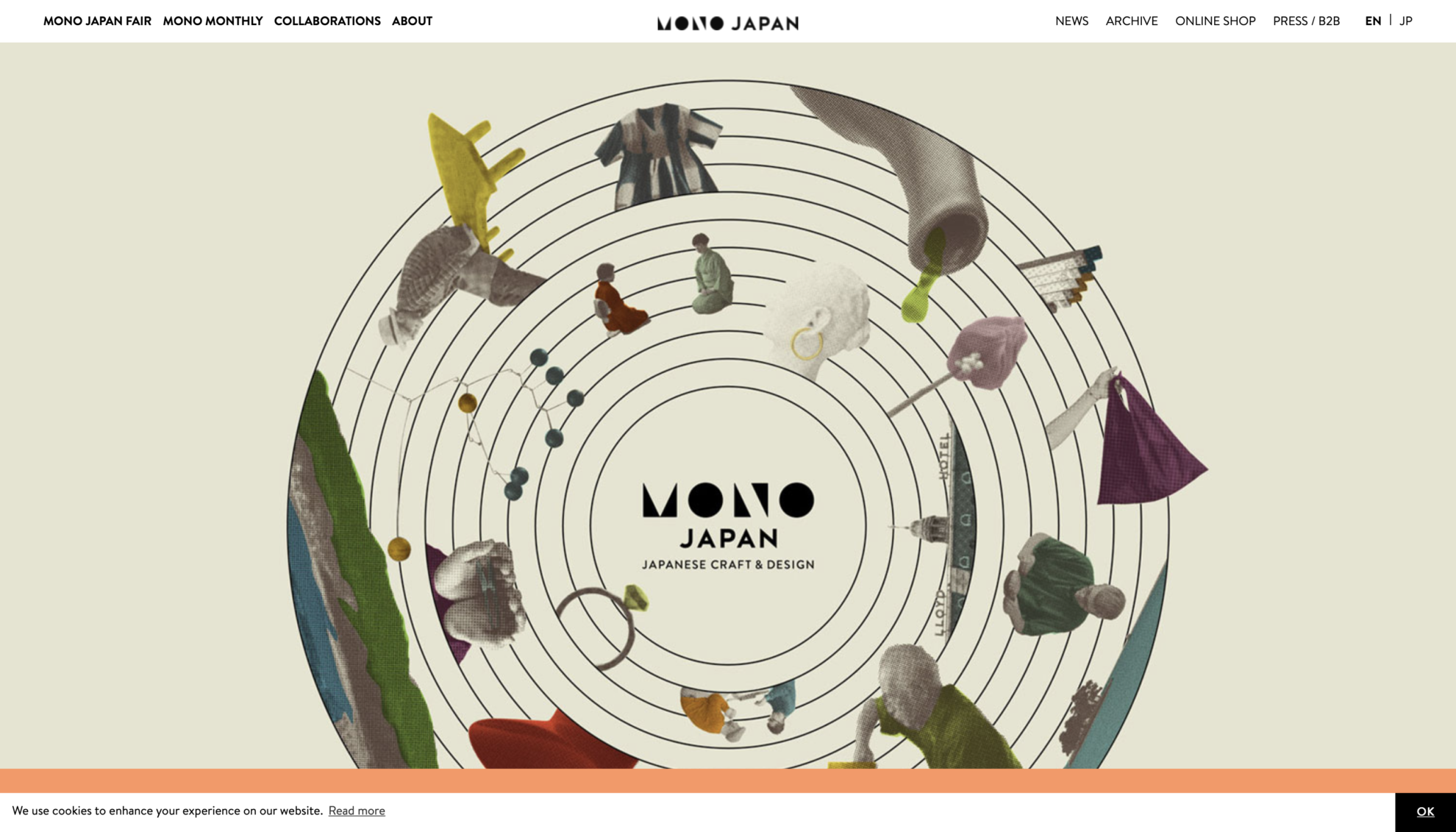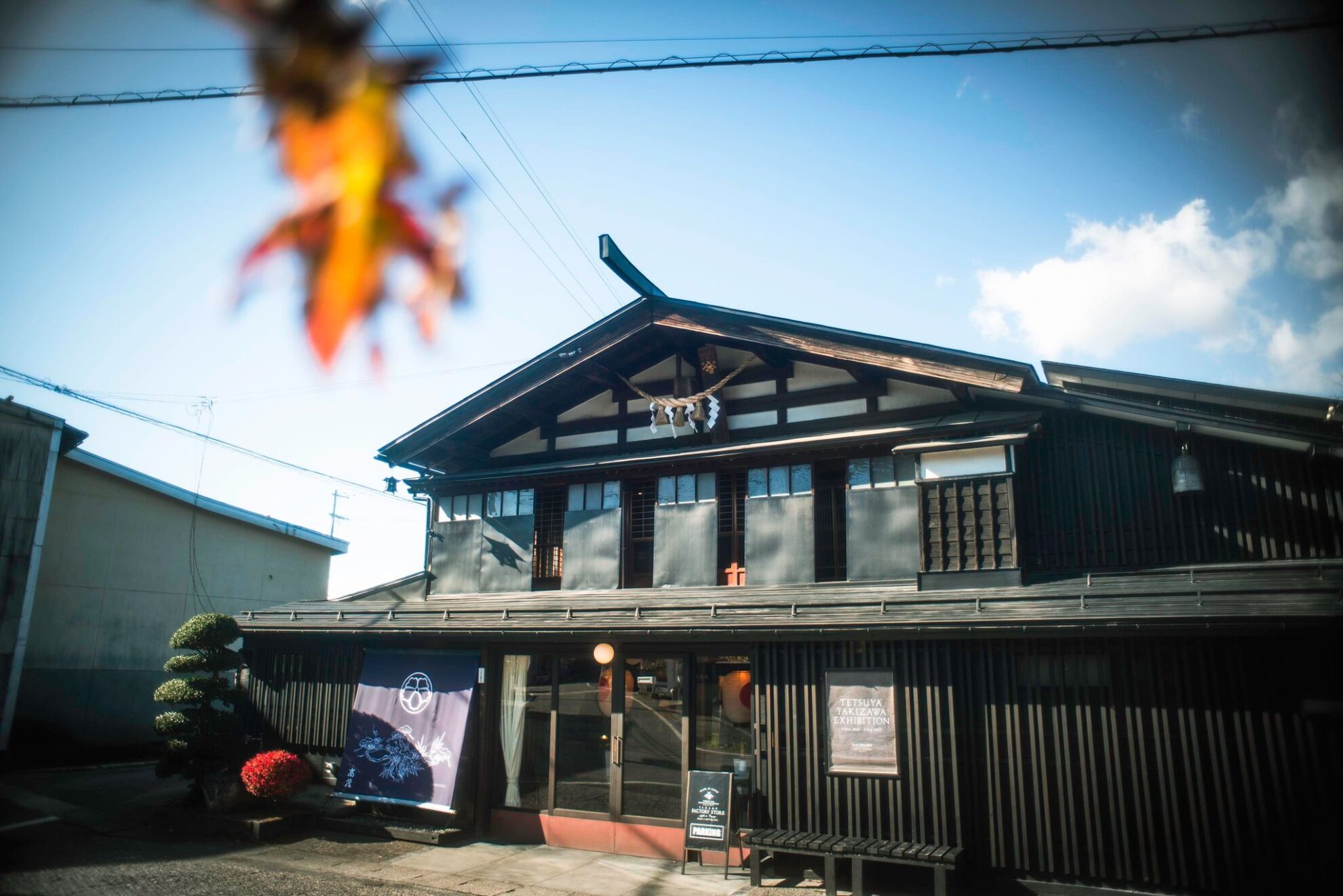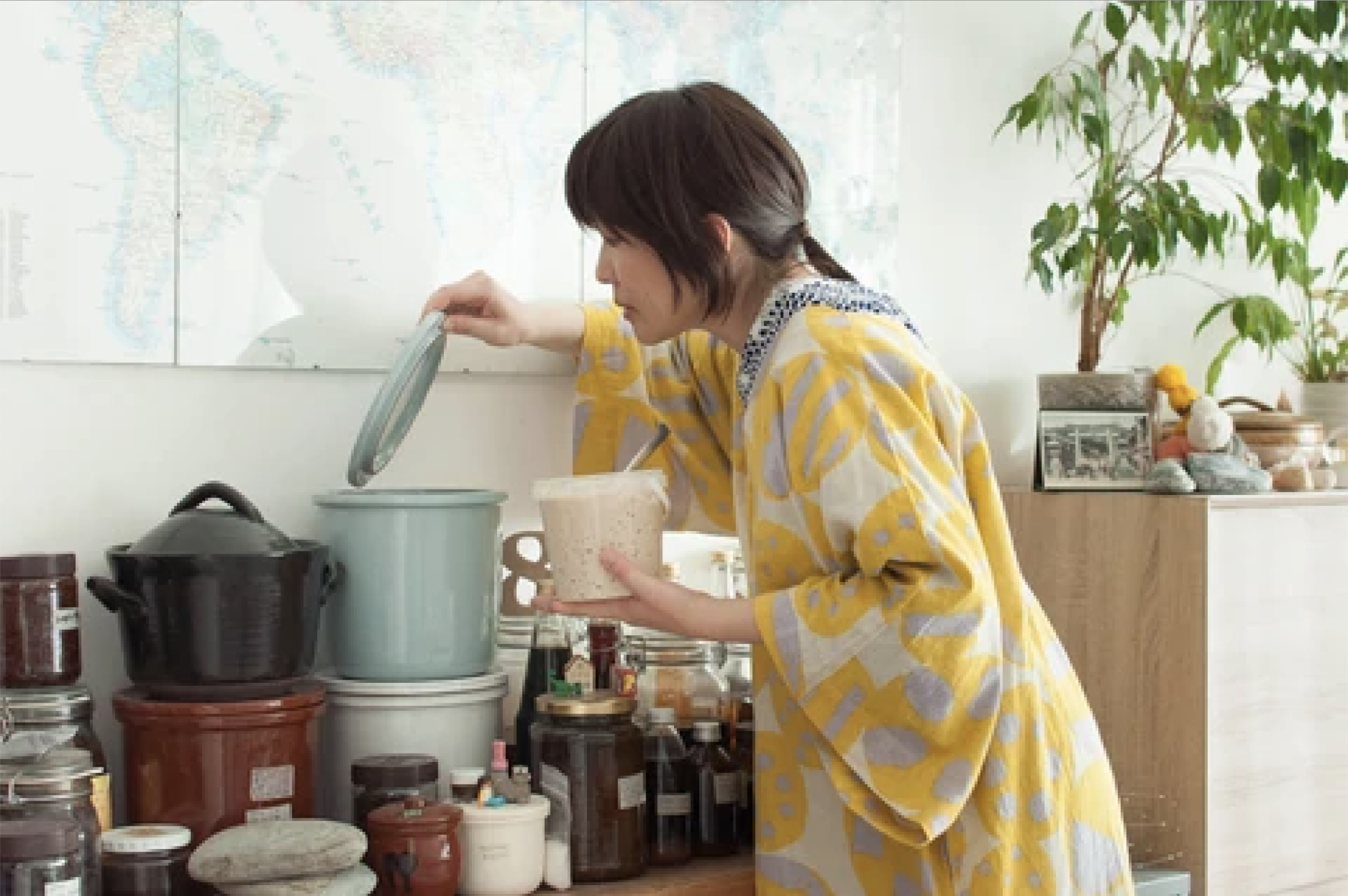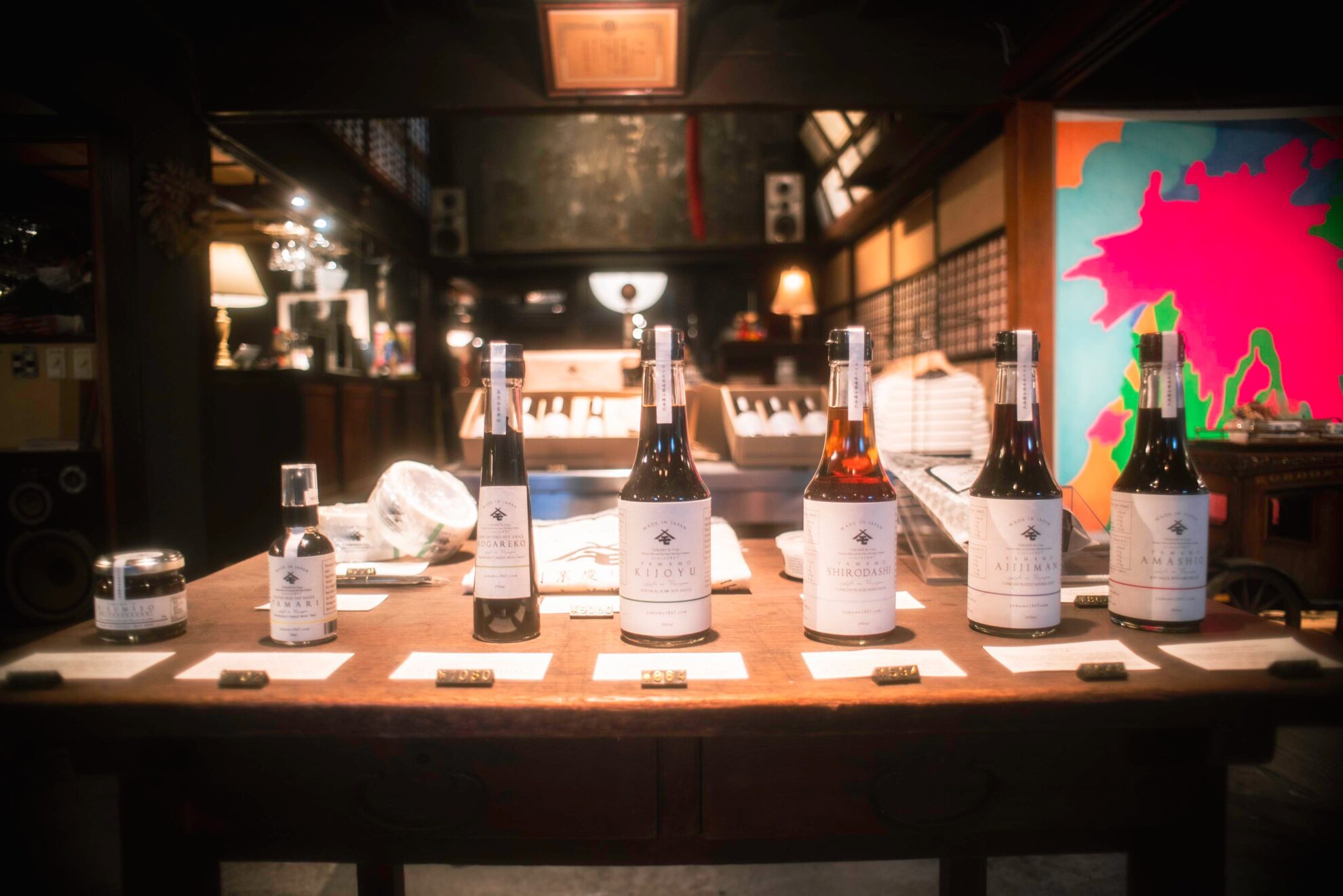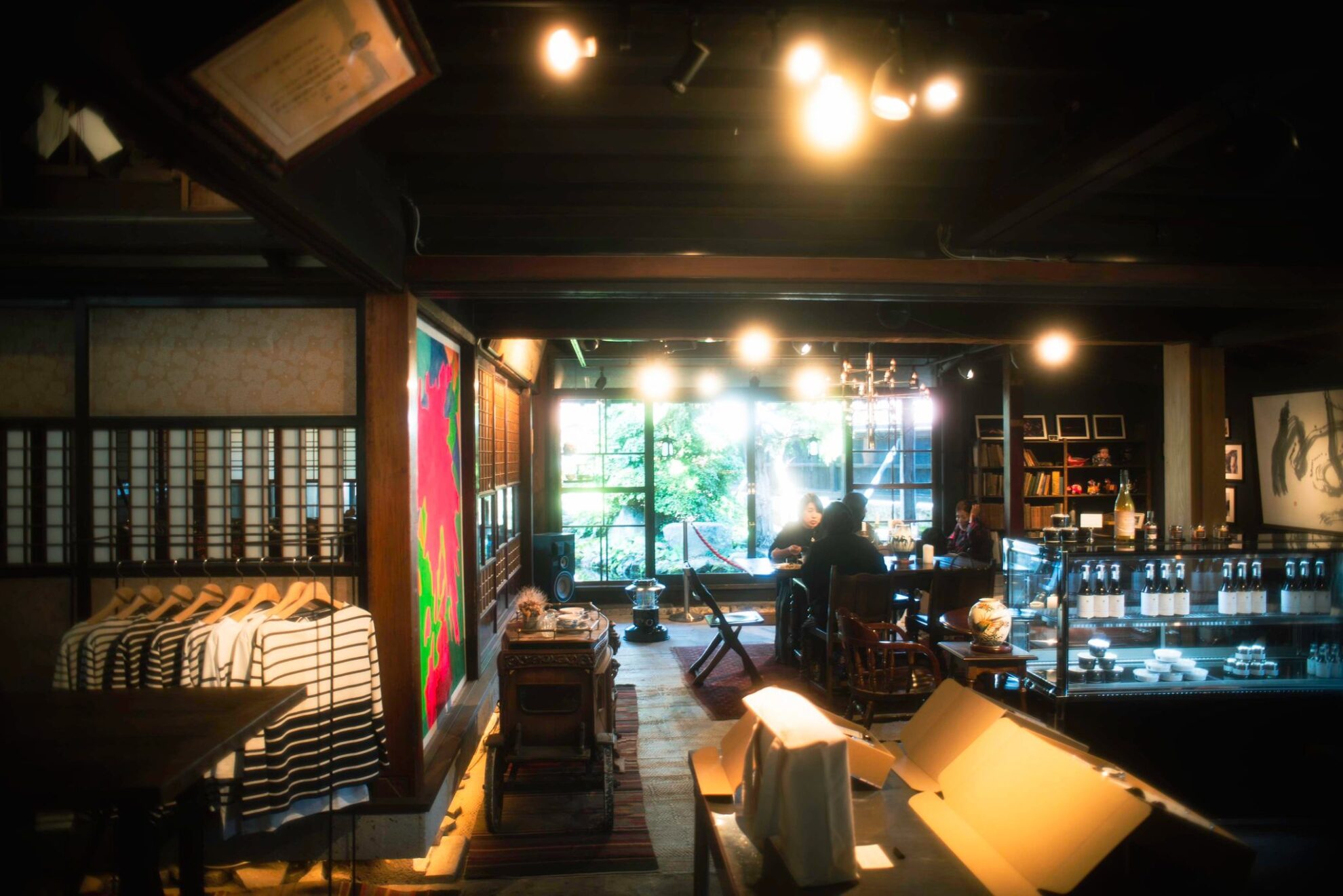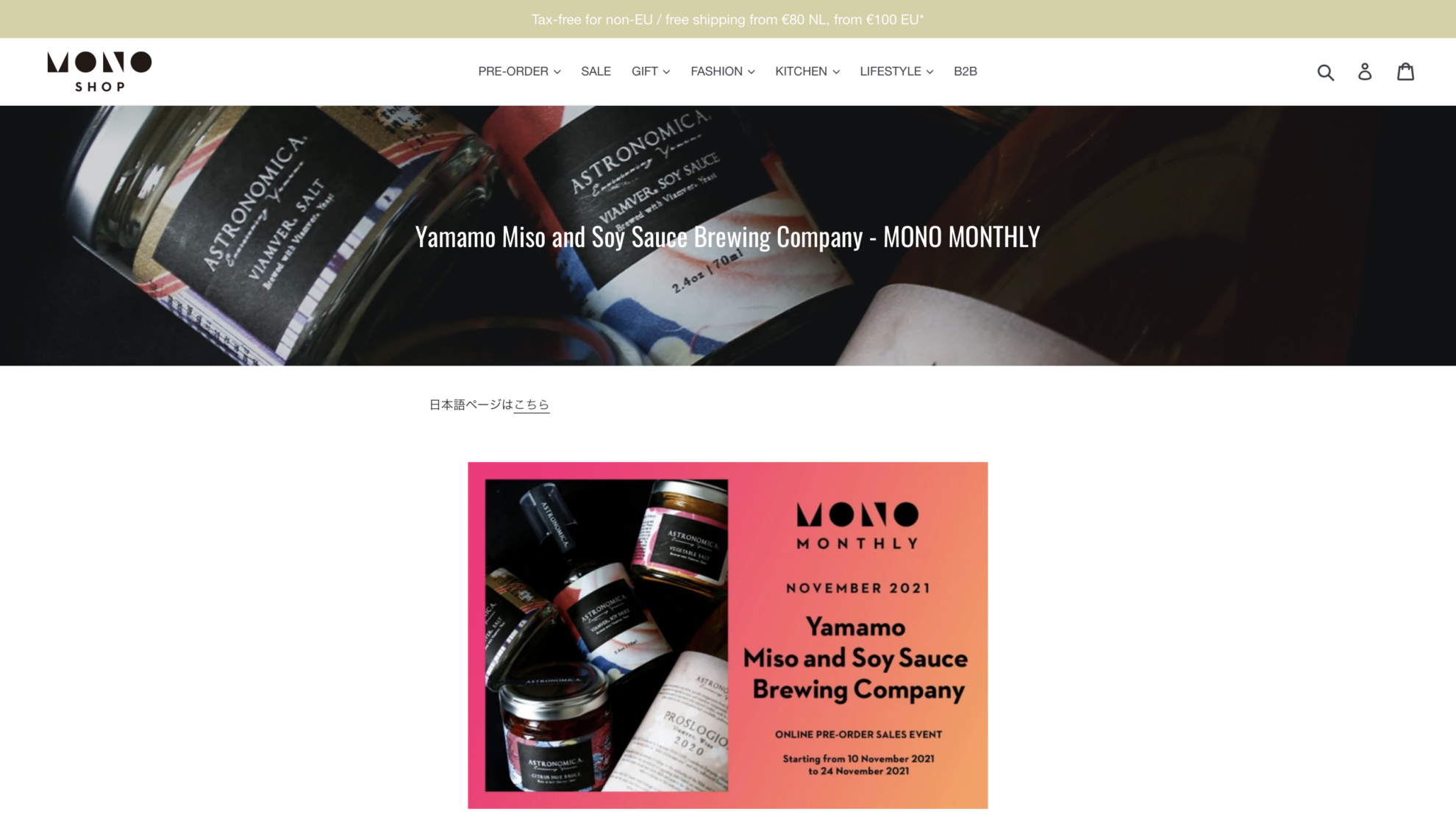発酵という古来からある技術をいかに前進させるのか。家業を継いでからその問いの答えを探すべく、活動を続けてきました。長い年月の積み重ねに新たな発見のエッセンスを加えることができれば、進化につながるのではないか。当蔵に古くから共生してきた蔵付酵母から発見したViamver®︎酵母の存在が、その問いの答えを出すことができるのかもしれません。
Viamver®︎酵母という新しい菌の効能をいかに表現するのか、という試みは、まずは料理において発揮されます。コハク酸のうま味はほぼ全ての料理の下支えとなり、魚介だしを加えたような美味しさを付与することができます。例えば醤油に効果を発揮するとだし醤油のように、牛乳に効果を発揮するとチーズのようなニュアンスを出すことができます。私たちは、Viamver®︎酵母を全ての料理に使用したメニューを構成しています。
Kappo1月号「東北の発酵」でYAMAMO GARDEN CAFEのディナーコースを取り上げていただいております。表紙と6ページに渡る掲載は、編集部の方々の熱意を感じています。ぜひ記事をご覧いただきたいと思います。
.
News of Article Publication_Kappo
How can we move forward with the ancient technology of fermentation? Since I took over the family business, I have been working to find the answer to that question. If we can add the essence of new discoveries to the accumulation of long years, it will lead to evolution. The existence of Viamver®︎ yeast, which we discovered from the brewer’s yeast that has coexisted in our brewery for a long time, may be able to provide an answer to that question.
Our attempt to find a way to express the efficacy of this new fungus, Viamver®︎ yeast, is first demonstrated in cooking. The umami taste of succinic acid can underpin almost any dish, giving it a taste like the addition of seafood broth. For example, it can be added to soy sauce to make it taste like dashi soy sauce, or to milk to make it taste like cheese. We compose our menus using Viamver®︎ yeast in all of our dishes.
YAMAMO GARDEN CAFE’s dinner course is featured in the January issue of Kappo, “Fermentation in Tohoku”. The cover and the six pages of the article are a testament to the enthusiasm of the editorial staff. We hope you will enjoy the article._mediainfo._magazine
.
報紙出版_Kappo
如何推進古老的發酵技術。接手家族企業後,我繼續努力尋找這個問題的答案。如果我們能夠在多年的積累中加入新發現的精華,就會導致進化。從與我們長期共存的啤酒酵母中發現的Viamver®︎酵母的存在或許能夠回答這個問題。
關於如何表達一種名為 Viamver®︎ 酵母的新細菌的功效的嘗試首先在烹飪中得到證實。琥珀酸的鮮味幾乎支持所有菜餚,可以賦予海鮮湯湯的味道。例如,當它對醬油有效時,它會產生類似醬油的細微差別,當它對牛奶有效時,它會產生類似奶酪的細微差別。我們製作的菜單在所有菜餚中都使用了 Viamver®︎ 酵母。
YAMAMO GARDEN CAFE的晚餐套餐登上了Kappo“東北發酵”1月號。 封面和6頁的刊物感受到了編輯人員的熱情。 我希望你閱讀這篇文章。
.
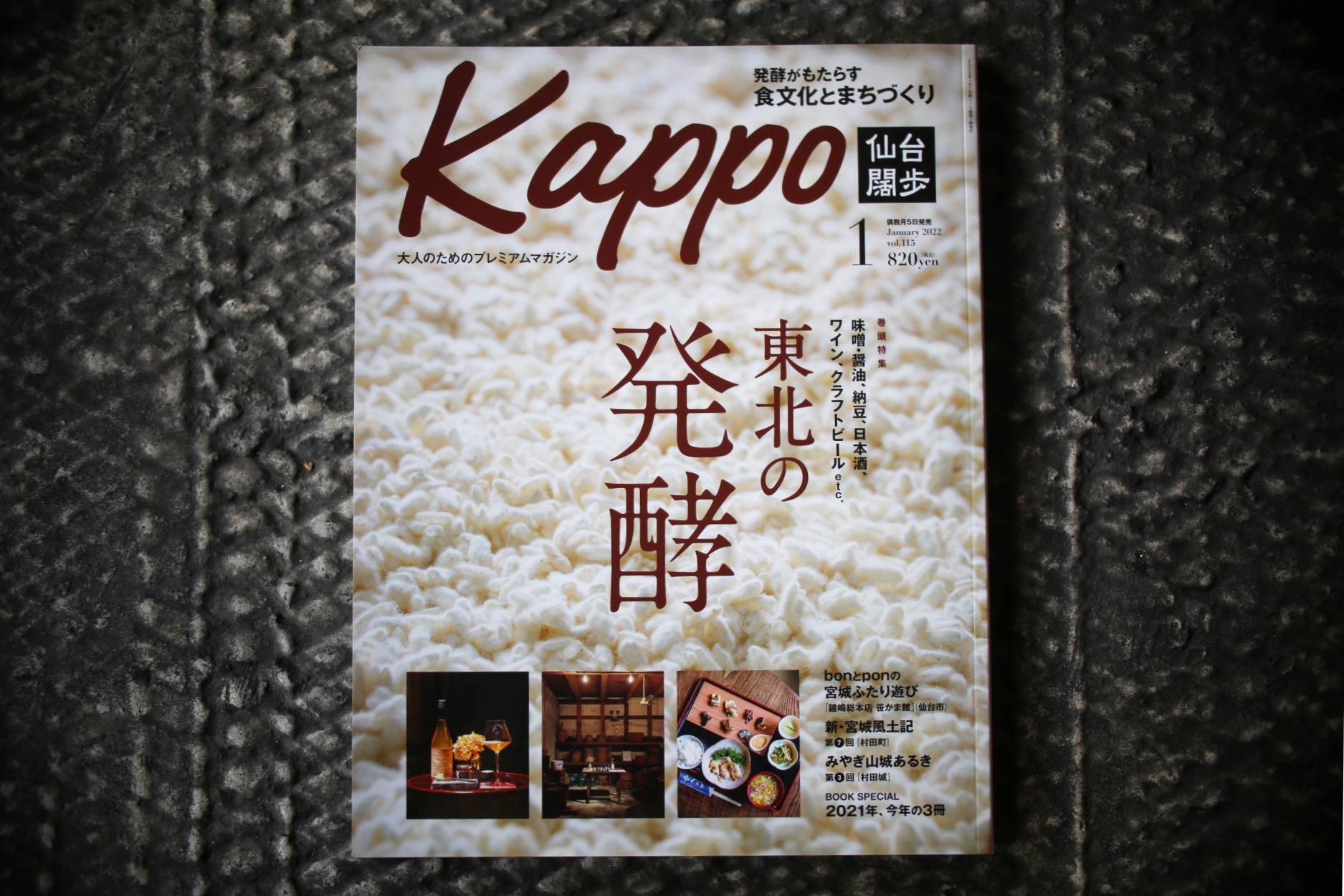
.
発酵、その広く深き奥懐に分け入る日々を。
7代目が起こした老舗の革新
無数の偶然と何者かの意志によって取捨選択がなされた、必然のみの世界。154年の長い歴史を経ていま『ヤマモ味噌醤油醸造元』に在るものは、すべてに確かな意味を有している。
江戸末期創業、皆瀬川の伏流水を源に味噌・醬油の醸造を続ける老舗蔵元『ヤマモ味噌醤油醸造元』。地元の人々に愛され続ける伝統の味噌や醤油、だし醤油などを作り続けるとともに、世界の食文化と和の調味料との融合・進化を目指して “Life is Voyage”という理念を掲げ、海外展開とともに新たな価値創造を行なっている。老舗の急激な変革は、7代目当主である高橋泰さんの人物像を色濃く映すもの。と、いうより、高橋さんの思想、思考、哲学が、老舗に新たな未来をもたらしたと言っても過言ではない。
跡を継ぐ気など、さらさらなかったという。大学ではデザイン工学と建築を学び、当然、建築家になることを考えた。しかし、内なる自分にヴィジョンを問いかけた時、そこにあったのは新しい建物を建てることではなく、歴史ある文化と新しい文化の融合した“何か”をつくることだと気づいた。振り仰げば、6代続いた家業がそこにあった。
.
Fermentation, a daily journey into its wide and deep interior.
Innovation of a long-established company by the 7th generation
After 154 years of history, everything that exists at Yamamo Miso and Soy Sauce Brewery has a certain meaning.
Founded in the late Edo period, Yamamo Miso and Soy Sauce Brewing Company is a long-established brewery that has been brewing miso and shoyu using subterranean water from the Minase River as its source. While continuing to produce traditional miso, soy sauce, dashi soy sauce, and other products that are loved by local people, the company is also creating new value as it expands overseas under the concept of “Life is Voyage,” which aims to fuse and evolve Japanese seasonings with the world’s food culture. The rapid transformation of long-established companies has been a major factor. The rapid transformation of this long-established company is a reflection of the personality of Mr. Yasushi Takahashi, the seventh generation head of the company. Rather, it is no exaggeration to say that Mr. Takahashi’s thoughts, ideas, and philosophy have brought about a new future for the old store.
He says that he had no intention of taking over the business. At university, he studied design engineering and architecture, and naturally thought of becoming an architect. However, when he questioned his inner self about his vision, he realized that it was not to build new buildings, but to create something that fuses historical culture with new culture. Looking back, I saw the family business that had been in existence for six generations.
.
發酵,潛入它寬闊而深邃的懷抱的日子。
由第 7 代引起的長期創新
一個不可避免的世界,在那裡選擇是由無數的機會和某人的意志做出的。歷經154年的悠久歷史,“Yamamo味增醬油”中的一切都具有一定的意義。
創業於江戶時代末期的老字號“Yamamo味噌醬油釀造商”,繼續從禦瀨川的地下水中釀造味噌和醬油。在繼續製作深受當地人喜愛的傳統味噌、醬油和高湯醬油的同時,我們以“Life is Voyage”的理念向海外擴張,旨在通過日本調味料融合和發展世界飲食文化。也在創造新的價值。老字號店的快速轉型,是第七代老闆高橋太的性格的強烈體現。可以毫不誇張地說,高橋先生的思想、思想和哲學為這家歷史悠久的商店帶來了新的未來。
據說,他不想接手踪跡。在大學學習了設計工程和建築之後,我很自然地想到了成為一名建築師。然而,當我問內心的自我我的願景時,我意識到這不是關於建造一座新建築,而是關於創造一種融合了歷史和新文化的東西。回首過去,有一個家族企業延續了六代。
.
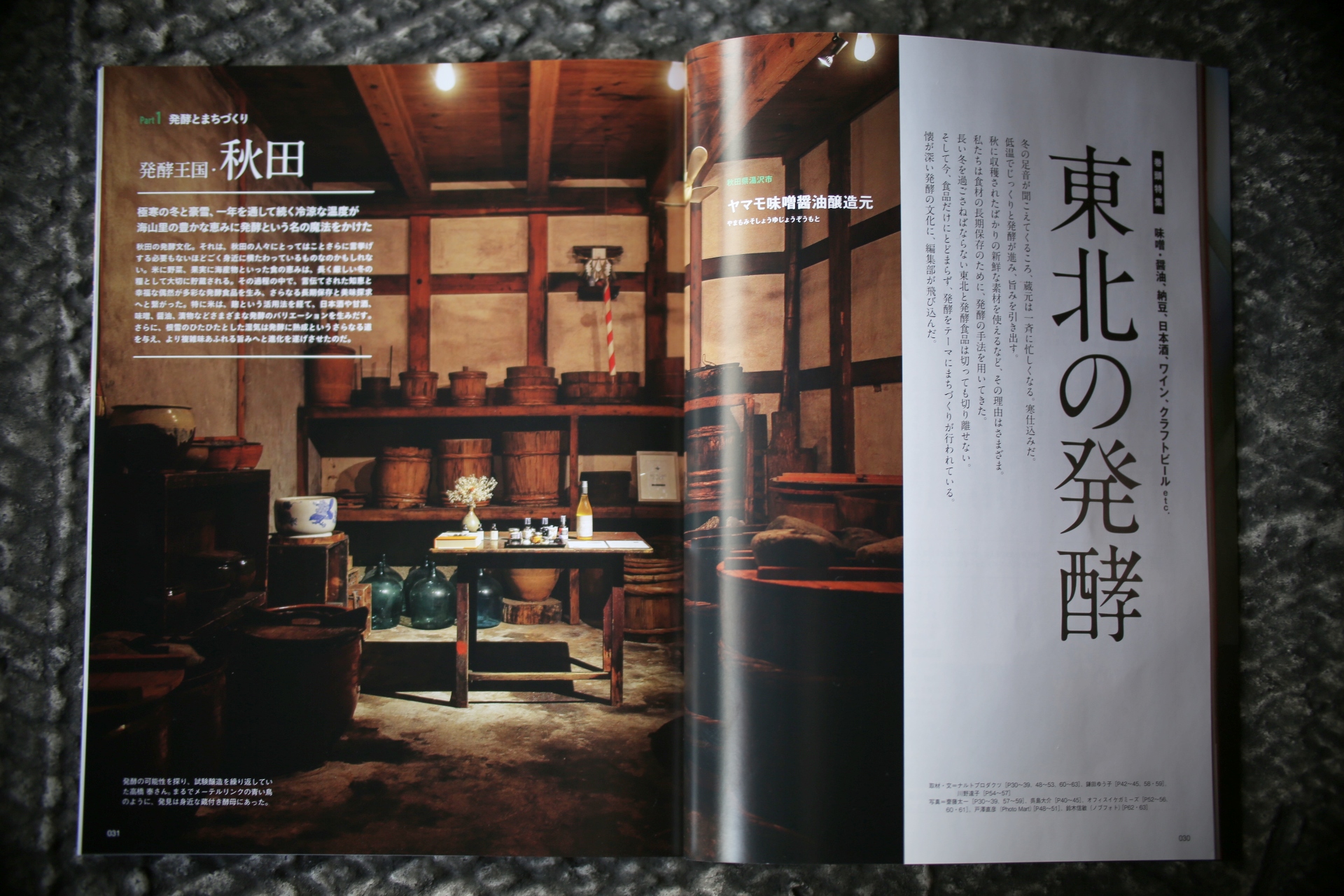
.
まるで新たな天体の発見のごとく
蔵の150年と高橋さんが起こした革新、そして描く未来について知るならば、迷わず「YAMAMO FACTORY TOUR」に参加するのがいい。単なる蔵見学のプログラムに留まらず、発酵という世界の現在、世界における発酵と『ヤマモ』の位置づけ、そして岩崎というこの地と『ヤマモ』の未来など、マクロとミクロを横断するナレッジが得られるだろう。
酒蔵でいう酒母室にあたるラボラトリーは、かつての漬物蔵。ここを揺籃に、革命的酵母である「Viamver®︎(ヴィアンヴァー)」の発見は果たされた。一般的な味噌・醤油蔵の酵母は好塩性(耐塩性)の性質を有しており、そのお蔭で適度な発酵と保存性の高さを保っているが、塩分のないところでは極端にパフォーマンスを落とす。対して一般的なワインや日本酒の酵母は塩によってその活動が抑えられ、発酵に及ぶことができないものも多い。ゆえに酒蔵と味噌蔵は両立し得ぬもの、とされてきたわけだが、「Viamver®︎」は味噌の発酵酵母でありながら、0%から18%という幅広い塩分濃度の中で生育でき、しかもアルコールを生成する能力を持つというとんでもない酵母なのだ。新しい酵母を発見することでさえ、新しい天体を発見するよりも困難だとされる発酵の世界。味噌と酒の両方を醸すことのできる「Viamver®︎」が、どれほどの驚きをもって迎えられたかが、よく分かるだろう。
.
It was like discovering a new celestial body
If you want to learn more about the 150 years of the brewery, the innovations Takahashi-san has made, and the future he envisions, don’t hesitate to join the “YAMAMO FACTORY TOUR. It is not just a program to visit the brewery, but you will gain knowledge that crosses the macro and micro levels, such as the current state of the world of fermentation, the position of fermentation and Yamamo in the world, and the future of Yamamo and this place called Iwasaki.
The laboratory, which is equivalent to a sake cellar in a sake brewery, used to be a pickles warehouse. It was here that the revolutionary yeast Viamver®︎ was discovered. The yeast in ordinary miso and soy sauce breweries is halophilic (salt-tolerant), which allows for moderate fermentation and high shelf life, but it performs extremely poorly in the absence of salt. In contrast, the yeast used in wine and sake is suppressed by salt, and many of them are unable to ferment. However, Viamver®︎ is an extraordinary yeast that can grow in a wide range of salt concentrations, from 0% to 18%, and is capable of producing alcohol, despite being a fermentation yeast for miso. Discovering a new yeast is said to be more difficult than discovering a new celestial body in the world of fermentation. The Viamver®︎, which can brew both miso and sake, was greeted with a great deal of surprise.
.
就像發現了一個新的天體
如果您想了解倉庫的150年,高橋先生帶來的創新,以及他所設想的未來,請不要猶豫參加“YAMAMO FACTORY TOUR”。除了啤酒廠參觀項目之外,您還可以獲得跨越宏觀和微觀的知識,例如發酵世界的現狀,發酵和“Yamamo”在世界上的地位,以及這個地方的未來。岩崎和“山毛”。
實驗室,對應於清酒釀造廠的清酒母室,是一個前泡菜釀造廠。考慮到這一點,革命性酵母“Viamver®︎”的發現就完成了。一般味噌和醬油釀造的酵母都具有嗜鹽性(耐鹽性)的特性,並因此保持適度的發酵和較高的儲存穩定性,但極端無鹽性能較差。另一方面,一般的葡萄酒和清酒的酵母活性受到鹽分的抑制,很多都不能發酵。因此,據說清酒釀酒廠和味噌釀酒廠不相容,但“Viamver ® ︎”是味噌發酵酵母,但它可以在0%至18%的鹽濃度範圍內生長,並且還可以生產酒精。這是一種具有發酵能力的可笑酵母。發酵的世界,即使發現新的酵母也比發現新的天體更難。可以看到味噌和清酒都可以釀造的“Viamver®︎”是多麼的驚訝。
.
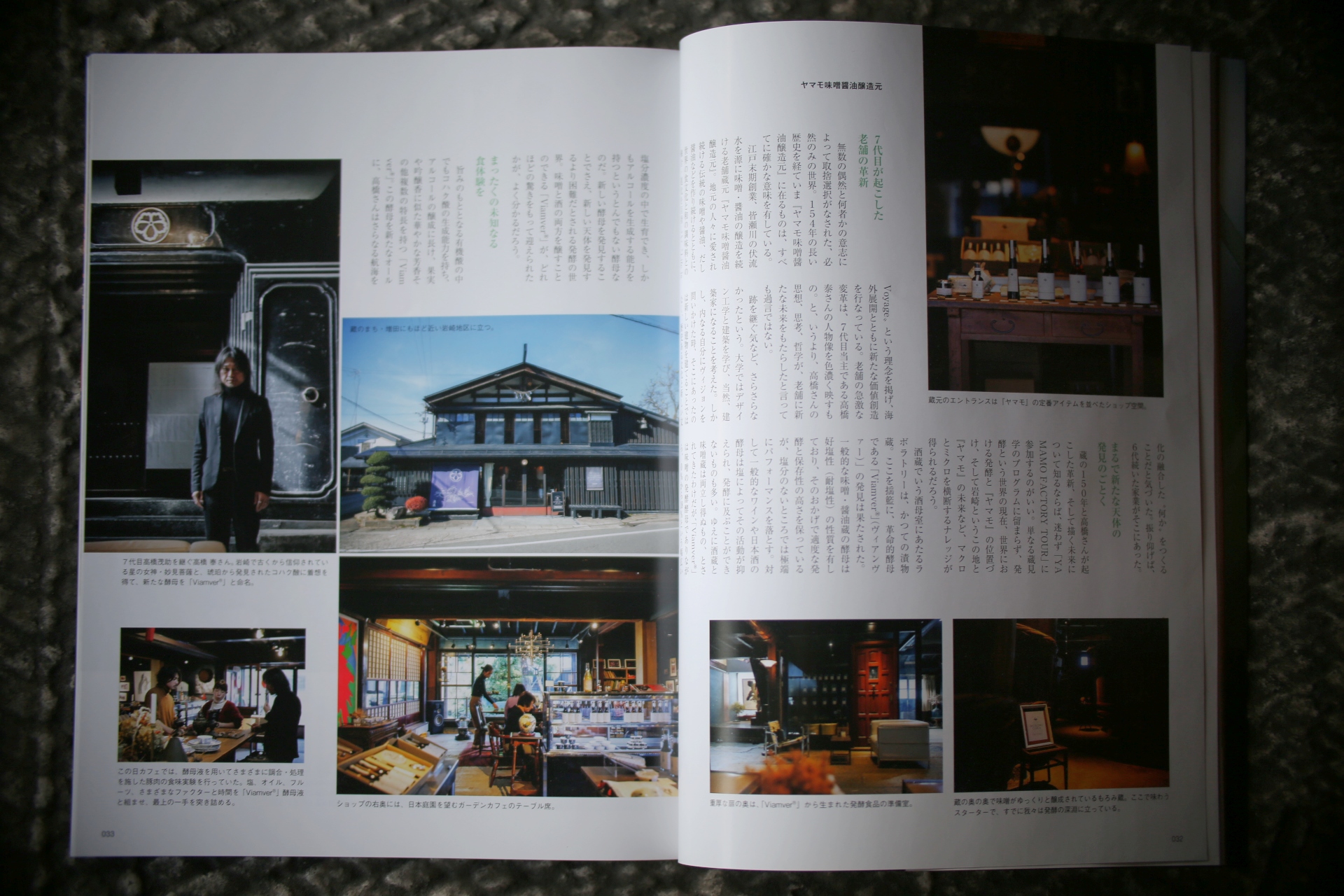
.
まったくの未知なる食体験を
旨みのもととなる有機酸の中でもコハク酸の生成能力を持ち、アルコールの醸成に長け、果実や吟醸香に似た華やかな芳香その他複数の特長を持つ「Viamver®︎」。この酵母を新たなオールに、高橋さんはさらなる航海を続ける。もろみ蔵の中に設えられた、小さなテーブル。「Gustation is Micro Journey(味覚は主観の旅である)」をテーマに展開されるコース料理のスターターとして位置づけられたこのテーブルでは、「Viamver®︎」によって醸されたワイン「PROSLOGION」とアミューズを、味噌の芳香の中で楽しむことができる。この日は鯛の昆布締めと発酵させた柿とクリームチーズのソフリット。添えられているのは、やはり「Viamver®︎」で香味野菜を調味したベジタブルソルトだ。鼻から入る香り、鼻へと抜ける香り、同じ酵母から生まれた複数の味わいが、鮮やかに出合って一体となってゆく官能。このひと皿に続く料理もすべて、「Viamver®︎」の恩恵と高橋さんやシェフたちの実験精神から生まれた。味わうごとに、「Viamver®︎」に翻弄されているような、侵食されてゆくような、不思議な感覚に身震いが起きた。
威風堂々たる蔵の中に広がる、かつて体験したことのない空間と思考、食の発見と悦び。『ヤマモ』が考える発酵の未来はまだまだ可能性に満ちており、その舳先は全世界へと向いている。
.
A completely new food experience
Viamver®︎ has the ability to produce succinic acid, which is one of the organic acids that give flavor, and is excellent at brewing alcohol. With this yeast as his new oar, Takahashi-san continues his voyage. A small table set up in the moromi storehouse. At this table, which is positioned as a starter for a course based on the theme “Gustation is a Micro Journey,” you can enjoy “PROSLOGION,” a wine brewed with Viamver®︎, and an amuse in the aroma of miso. On this day, we had sea bream with kombu shime. On this day, we had kombujime sea bream with fermented persimmon and cream cheese sofrito. It was accompanied by vegetable salt seasoned with “Viamver®︎”. The aroma that enters through the nose, the aroma that exits through the nose, and the sensation of multiple flavors born from the same yeast vividly meeting and becoming one. All the dishes that followed this one were born from the benefits of Viamver®︎ and the experimental spirit of Takahashi-san and the chefs. As I tasted each dish, I shuddered at the strange sensation of being at the mercy of Viamver®︎, of being invaded by it.
In the majestic storehouse, I found a space, thoughts, and food that I had never experienced before. The future of fermentation, as envisioned by Yamamo, is still full of possibilities, and it has its sights set on the whole world.
.
完全不為人知的飲食體驗
在作為鮮味來源的有機酸中,“Viamver®︎”具有產生琥珀酸的能力,善於培養酒精,具有類似於水果和吟釀香的華麗香氣。以這種酵母為新槳,高橋先生將繼續他的航程。莫羅米倉庫裡擺著的一張小桌子。定位為“Gustation is Micro Journey”主題套餐的開胃菜,“Viamver®︎”生產的葡萄酒“PROSLOGION”和amuse搭配味噌,您可以在香氣中享用。這一天,我們吃了海帶緊實的鯛魚和發酵的柿子和奶油芝士索菲托。附上用蔬菜調味的植物鹽,還有“Viamver®︎”。入鼻的香,出入鼻的香,同一種酵母產生的多種風味生動地融合在一起的感性。這道菜之後的所有菜品都是從“Viamver®︎”的好處和高橋先生和廚師們的實驗精神中誕生的。每次品嚐,都會有一種被“Viamver®︎”擺佈,被侵蝕的神秘感覺。
從未體驗過的空間與思緒,對食物的發現與喜悅,在雄偉的倉庫中蔓延開來。 “Yamamo”認為的發酵的未來仍然充滿可能性,它的弓適合全世界。
.
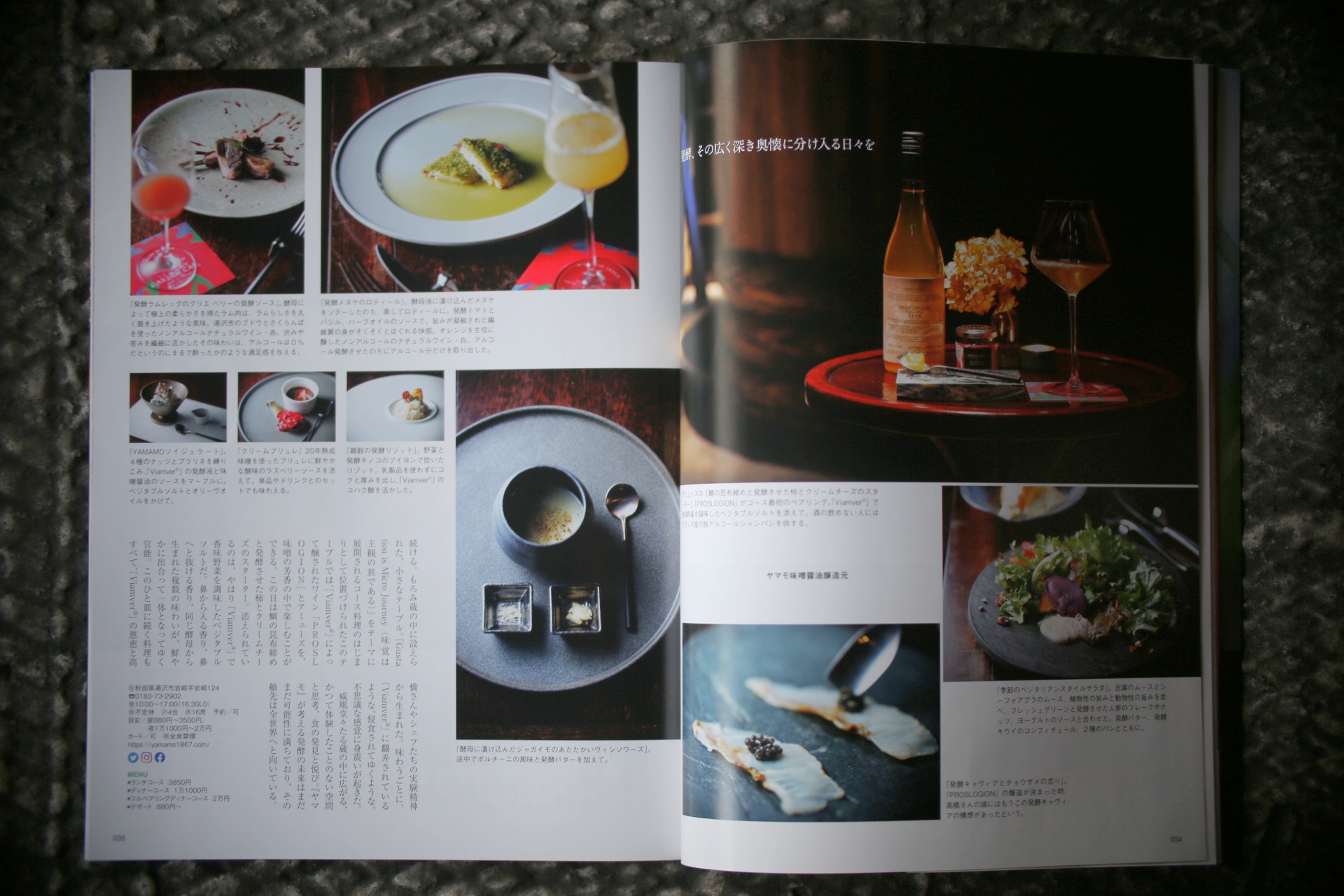
.
スターター
アミューズの「鯛の昆布締めと発酵させた柿とクリームチーズのソフリット」、「PROSLOGION」がコースのスターター。「Viamver®︎」で香味野菜を調味したベジタブルソルトを添えて。酒の飲めない人にはフランス産のノンアルコールシャンパンを供する。
サラダ
「季節のベジタリアン・サラダ」。豆腐のムースとあん肝のムース、植物性の旨みと動物性の旨みを並べ、フレッシュグリーンと発酵させた人参のフレークやナッツ、ヨーグルトのソースと合わせた。発酵バター、発酵キウイのコンフィチュール、2種のパンとともに。
前菜
「発酵キャヴィアとチョウザメの炙り」。「PROSLOGION」の醸造が決まった時、高橋さんの頭にはもうこの発酵キャヴィアの構想があったという。
スープ
「酵母に漬け込んだジャガイモのあたたかいヴィシソワーズ」。途中でポルチーニの風味と発酵バターを加えて。
ポワソン
「発酵メヌケのロティール」。酵母液に漬け込んだメヌケをソテーしたのち、蒸してロティールに。発酵トマトとバジル、ハーブオイルのソースで。旨みが凝縮された繊維質の身がそくそくとほぐれる快感。オレンジを主役に醸したノンアルコールのナチュラルワイン・白。アルコール発酵させたのちにアルコール分だけを取り出した。
ヴィアンド
「発酵ラムレッグのグリエ ベリーの発酵ソース」。酵母によって極上の柔らかさを得たラム肉は、ラムらしさを丸く磨き上げたような風味。湯沢市のブドウとさくらんぼを使ったノンアルコールナチュラルワイン・赤。渋みや苦みを繊細に活かしたその味わいは、アルコールは0%だというのにまるで酔ったかのような満足感を与える。
リゾット
「雑穀の発酵リゾット」。野菜と発酵キノコのブイヨンで炊いたリゾット。乳製品を使わずにコクと厚みを出し、「Viamver®︎」のコハク酸を活かした。
デセール1
「クリームブリュレ」20年熟成味噌を使ったブリュレに鮮やかな酸味のラズベリーソースを添えて。単品やドリンクとのセットでも味わえる。
デセール2
「YAMAMOソイジェラード」。4種のナッツとプラリネを練りこみ、「Viamver®︎」の発酵液と味噌醤油のソースをマーブルに。ベジタブルソルトとオリーヴオイルをかけて。こちらも単品・ドリンクセットのオーダー可能。
.
Starter
The amuse-bouche, “Sea bream kombu-jime, fermented persimmon and cream cheese sofrito” and “PROSLOGION” are the starters of the course. It is served with vegetable salt seasoned with Viamver®︎. Non-alcoholic champagne from France is served for those who do not drink alcohol.
Salads
Seasonal Vegetarian Salad. Tofu mousse and ankimo mousse, vegetable and animal goodness side by side, combined with fresh greens and fermented carrot flakes, nuts and yogurt sauce. Served with fermented butter, fermented kiwi confiture and two kinds of bread.
Hors d’oeuvres
Fermented Caviar and Seared Sturgeon. When the decision was made to brew “PROSLOGION”, Takahashi-san already had the idea of this fermented caviar in mind.
Soup
Warm Vichyssoise with yeast-soaked potatoes. Porcini flavor and fermented butter are added along the way.
Poisson
Fermented menouche rotisserie. Menoukeh marinated in a yeast solution is sautéed and then steamed into a rotisserie. It is served with a sauce of fermented tomatoes, basil and herb oil. The fibrous flesh with its concentrated flavor unravels quickly and pleasantly. This is a non-alcoholic natural white wine brewed with oranges as the main ingredient. After alcoholic fermentation, only the alcohol content was extracted.
Viand
Fermented lamb leg grill with fermented berry sauce. The lamb meat, made extra tender by the yeast, has a rounded and polished lamb-like flavor. Non-alcoholic natural wine red made from grapes and cherries in Yuzawa City. The astringency and bitterness of the wine are delicately brought out to give a satisfying sensation as if you were drunk, even though it has 0% alcohol.
Risotto
Fermented risotto with minor grains. This risotto is cooked with vegetables and fermented mushroom bouillon. The richness and thickness are achieved without using dairy products, and the succinic acid of Viamver®︎ is utilized.
Dessert 1
Crème Brûlée”: Brûlée made with miso aged for 20 years, served with a brightly acidic raspberry sauce. It can be enjoyed alone or as a set with a drink.
Dessert 2
YAMAMO Soy Gelade: Four kinds of nuts and pralines are kneaded into a marble with Viamver®︎ fermented liquid and miso-soy sauce. Topped with vegetable salt and olive oil. This item can be ordered separately or as part of a drink set.
.
起動機
Amuse 的“鯛魚海帶收緊和發酵柿子奶油奶酪 sofrito”和“PROSLOGION”是課程的開端。在“Viamver®︎”中加入用調味蔬菜調味的植物鹽。對於那些不能喝酒的人,提供法國無酒精香檳。
沙拉
“時令素食沙拉”。豆腐慕斯和 ankimo 慕斯,蔬菜和動物的味道排列在一起,並結合新鮮的綠色和發酵胡蘿蔔片、堅果和酸奶醬。有發酵黃油、發酵獼猴桃和兩種麵包。
開胃菜
“發酵魚子醬和鱘魚烤製”。在決定釀造“PROSLOGION”的時候,高橋先生已經有了這款發酵魚子醬的想法。
湯
“用酵母浸泡土豆的溫暖 Vichyssoise”。沿途加入牛肝菌味和發酵黃油。
泊松
“發酵菜單旋轉”。將浸泡在酵母液中的menuke 炒熟後,蒸成rotille。搭配發酵番茄、羅勒和草本油醬。令人高興的是,帶有濃縮鮮味的纖維體鬆動了。白葡萄酒,一種以橙子為主的不含酒精的天然葡萄酒。酒精發酵後,只取出酒精含量。
維安德
“發酵羊腿格里漿果發酵醬”。用酵母極度軟化的羊肉,有一種像羊肉一樣圓潤的口感。使用湯澤葡萄和櫻桃的無酒精天然酒紅色。充分利用了澀味和苦味的味道,即使是0%的酒精度數,也給人一種醉酒般的滿足感。
燴飯
“小米發酵燴飯”。用蔬菜湯和發酵蘑菇烹製的燴飯。 “Viamver®︎”的琥珀酸被用來增加豐富度和厚度,而無需使用乳製品。
甜點 1
“焦糖布丁” 20 年陳年味噌,配以酸亮的覆盆子醬。您也可以單獨享用或與飲品搭配享用。
甜點 2
“YAMAMO Soi Gerrard”。將4種堅果和果仁糖揉成團,將“Viamver®︎”發酵液和味噌醬油調成大理石狀。撒上植物鹽和橄欖油。這也可以單獨訂購或作為飲料套裝訂購。
.
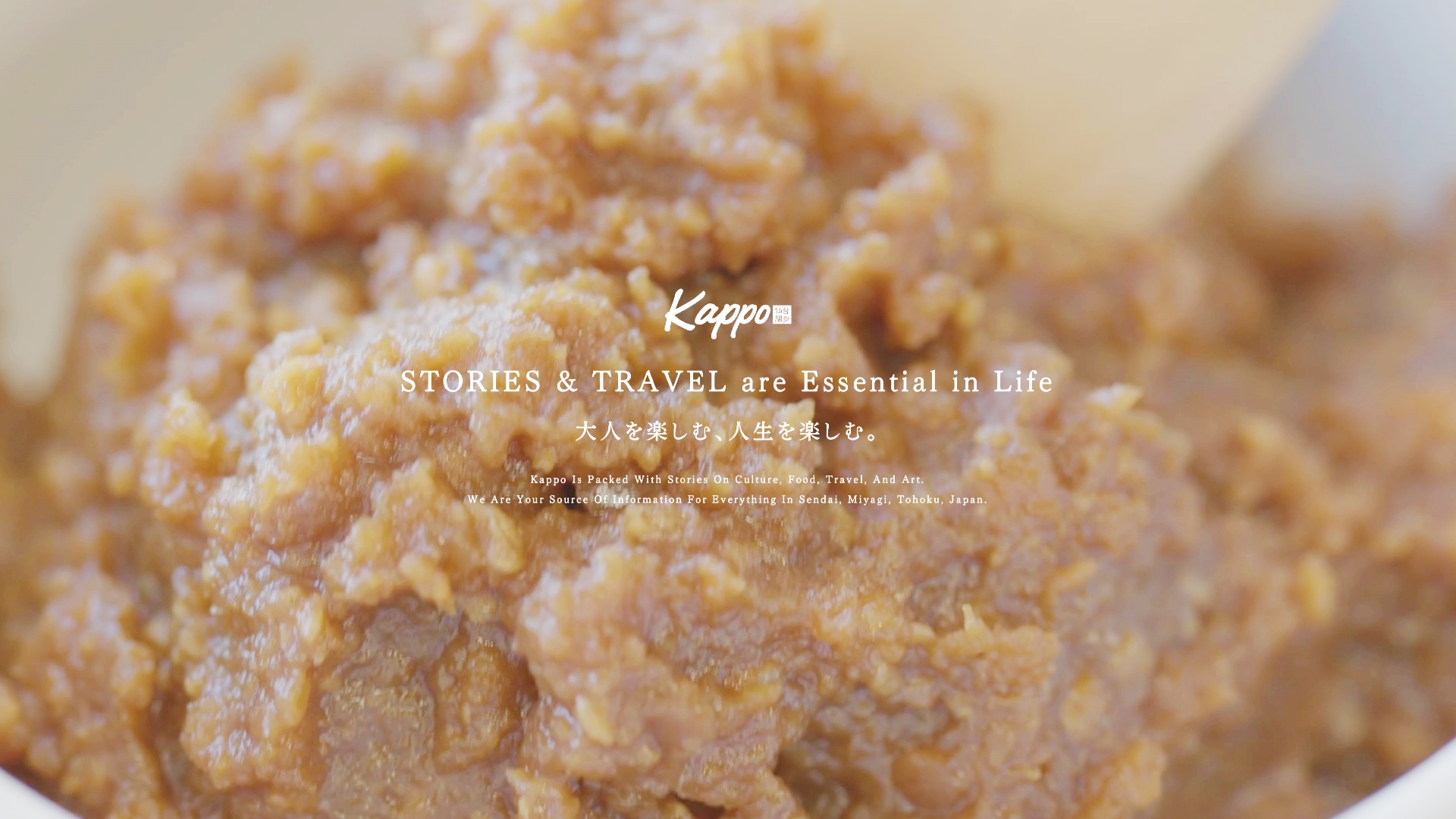
.
.
○「Kappo」とは
『Kappo 仙台闊歩』は、2002年8月に「大人のためのプレミアムマガジン」として創刊しました。知的好奇心にあふれた、ゆとりのある大人世代をターゲットに、歴史、文化、美術、グルメ、温泉、旅、エンターテインメントなどを紹介しています。
厳選した仙台・宮城・東北の情報を、より深く掘り下げた記事と大胆なビジュアルで見せる誌面が特徴です。編集部スタッフが足を使って得た各地の情報をもとに、その場で感じたさまざまな事柄を交え、臨場感をもって伝えることを大切にしています。本誌を通じて、地元にゆかりのある多彩でユニークな人々の活動を知り、土地の魅力を再発見していただければと願ってやみません。
.
○About “Kappo”
Kappo was first published in August 2002 as a “premium magazine for adults. Targeting the intellectually curious and relaxed adult generation, Kappo introduces history, culture, art, gourmet food, hot springs, travel, and entertainment.
The magazine features in-depth articles and bold visuals that present carefully selected information about Sendai, Miyagi and Tohoku. Based on the information obtained by the staff of the editorial department, we try to convey the information with a sense of realism by including various things that we felt on the spot. It is our hope that through this magazine, you will learn about the activities of the diverse and unique people associated with the local area and rediscover the charm of the land.
.
○什麼是”Kappo”
Kappo於2002年8月作為“成人高級雜誌”首次出版。 介紹歷史、文化、藝術、美食、溫泉、旅遊、娛樂等,面向求知欲強、輕鬆自在的成人一代。
它的特色是一本雜誌,以更深入的文章和大膽的視覺效果展示了精心挑選的仙台、宮城和東北信息。 根據編輯人員用腳獲得的信息,以真實感傳達他們在現場感受到的各種事物是很重要的。 我們希望您通過這本雜誌了解與當地有關的各種獨特的人的活動,重新發現這片土地的魅力。
.
